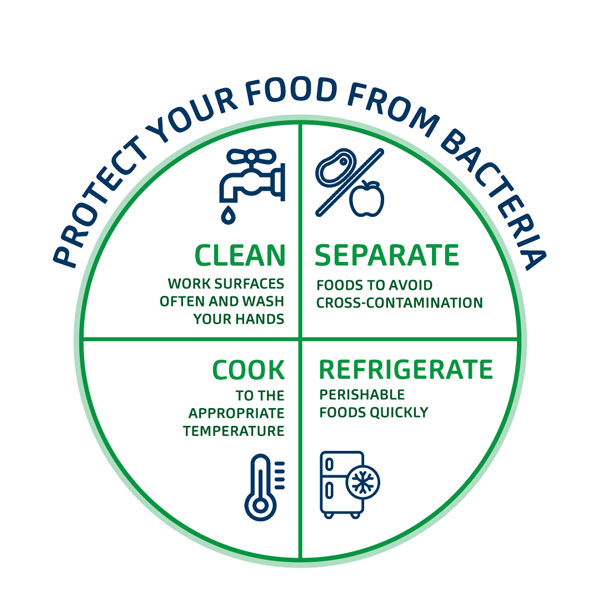Here are 4 tips to put into practice to avoid #foodpoisoning during the #holidays. And don’t forget, in case of doubt, it is better to throw it away.
🥂
Like every year, for a lot of people, the #holiday season is a synonym for gathering over a good meal, hot or cold, or even in a buffet style. 🎄
Improper food handling or preparation can lead to #contamination by microorganisms. As a result, following the ingestion, it may engender a foodborne illness called #FoodPoisoning.
But, by taking a few precautions, you can easily protect your family and friends. Here are the four steps to follow:
1️⃣ Clean
Frequently wash your hands, and #clean contact surfaces (such as counters) and utensils, to prevent the spread of bacteria.
2️⃣ Separate
Pull apart raw food from cooked one or ready-to-eat meals to avoid cross-contamination.
3️⃣ Cook
To ensure that harmful bacteria are eliminated, cook food to the recommended internal temperature:
🍗 82°C (180°F) for whole poultry
🥘 74°C (165°F) for stuffing, casseroles, leftovers, egg dishes, ground turkey or chicken, including sausages containing poultry meat
🍖 71°C (160°F) for pork chops, ribs, and roasts, ground beef, pork, and veal, including sausages
🥩 at least 63°C (145°F) for all-muscle beef cuts and veal cuts, such as steaks and roasts
4️⃣ Refrigerate
Put promptly, food and leftovers in a refrigerator to 4°C (40°F) or lower. Do not leave food at room temperature for more than two hours, and do not serve it in plates or bowls that have already been used and not cleaned.
Remember that you cannot rely on food’s appearance, smell, or taste, to know if it is contaminated. In case of doubt, it is better to throw it away.

